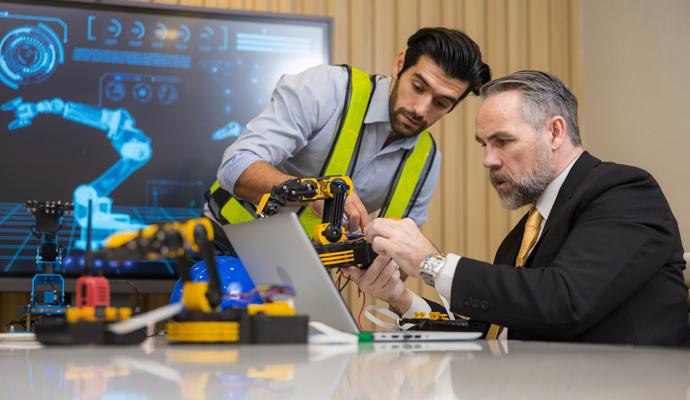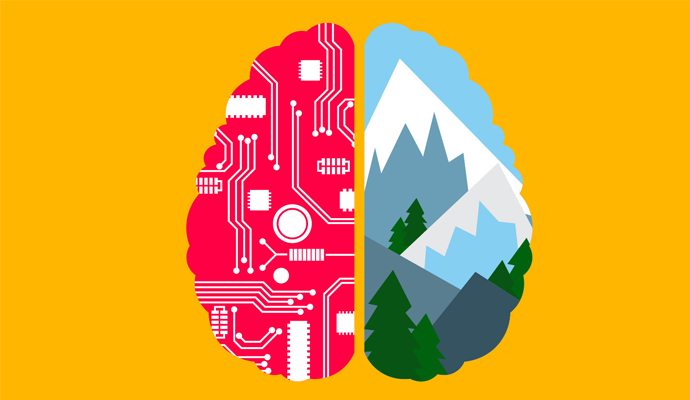Five standards for responsible AI use
Business leaders must implement artificial intelligence in a principled way to optimize customer experience and earn people’s trust.
Note: This is the second post in a three-part series that explores how CEOs are responding to some of the key challenges raised in the PwC Global CEO Survey. Read the other posts in the series, on closing the skills gap and building trust in business, here and here.
Imagine, for one awful moment, that someone you love has been hit by a car. Now imagine that when you dial emergency services, it isn’t a human being on the other end but a digital assistant, powered by artificial intelligence (AI).
In a nanosecond, the software has analyzed your call and signaled an AI-enabled ambulance. Despite rush-hour congestion, the ambulance reaches you in record time because it’s able to clear a direct route using real-time and historic traffic data to control all the stoplights along the way. When the special person in your life survives, you thank your lucky stars for AI.
Or do you? You soon learn the vehicle at fault was a self-driving pizza delivery car. Would your loved one have been hit if there were a human behind the wheel? On the other hand, would the ambulance have gotten there in time if not for AI? This scenario demonstrates the potential for AI to transform customer experience, and it shows some of the ways in which trust in the technology can be built — or eroded.
Now imagine that you are the chief executive of the pizza delivery company, or the healthcare provider that attended to the crash. How would you want to prepare for this moment? What capabilities would you need? What kind of transparency? It turns out that many CEOs really don’t know where to start in answering these questions. But they know that they have to learn. PwC’s 21st CEO Survey found that 70 percent of CEOs globally (and 77 percent of CEOs in Australia) expect technology to be very disruptive for business over the next five years, but only 38 percent of CEOs globally (and 10 percent in Australia) are clear on exactly how robotics and AI can add value for their customers. And new data on U.S. executives shows that CEOs say they find building trust in AI to be the most challenging part of implementing it.
Understanding How to Use AI
An AI-enabled future might sound impossibly Jetsons-like, but the time when AI can respond with better, faster, more accurate decision making than human beings is already here. Want to use powerful insights from the customer-facing experience of your entire sales force? AI can help do that. Want to harness that information to successfully cross-sell, upsell, make personalized recommendations, reliably predict customer needs, and increase the overall stickiness of your customer relationships? AI can help do that, too.
PwC’s Global CEO Survey: Providing unique insight into the thinking of corporate leaders around the world, PwC’s annual Global CEO Survey covers issues such as the prospects for economic growth, the challenges in building a workforce, the threats facing companies today, and the impact of AI.
So, if you’re a CEO, how do you move from experimenting with AI at the fringes of your business to putting it at the very core? Don’t think of this as an AI challenge; think of it as a business challenge. You need to start by maximizing the capture and storage of your operational data, because historic information will add to the quality of your decision making once AI is up and running.
The time when AI can respond with better, faster, more accurate decision making than human beings is already here.
Once you’ve digitized your data, move toward fully digitizing your business model. If you hope to compete, then augmented intelligence — where machine learning is used to support humans — is no longer enough. It simply bolts aspects of automation onto existing business systems. You should think about how you can apply automated intelligence, which uses AI to complete routine, existing tasks without human involvement, or autonomous intelligence, in which the AI system adapts and learns to create new ways of doing things without human assistance.
Build Trust in AI to Create Value for Customers
AI will be useless if customers have bad experiences. So you need to address five complicated questions that are the pillars of responsible AI.
1. Is the AI unbiased and fair? AI learns from data, so that data must be representative of the real world. To ensure AI models are fair, organizations must be able to identify data or algorithmic biases to understand what influences a model’s decision.
2. Is the AI interpretable? AI offers little insight into how it reaches its outcomes, because many algorithms are beyond human comprehension. Organizations must create AI systems that are explainable, transparent, and provable so human users will be able to understand and trust decisions.
3. Is the AI robust and secure? The best AI system cannot operate indefinitely, and as with other technologies, cyber-attacks can penetrate, slow, and fool it. Ongoing cybersecurity is needed to both stop attacks and monitor performance.
4. Is the AI appropriately governed? Just as businesses audit financial and operating practices, they must also be able to audit their AI systems. AI is currently developed and maintained in silos, creating confusion and uncertainty around inspections and assessments. Enterprise-wide accountability is required.
5. Is the AI legal, ethical, and moral? Organizations must use AI in a way that aligns with their mission and social responsibilities, be able to evaluate the technology’s impact on employees and customers, and operate within the boundaries of regulation, both enacted and in discussion.
When you address these questions, it’s important to assess the entire AI ecosystem, from collecting and sourcing data to implementing actions. Strength in these five pillars is essential for building good customer experiences, and therefore trust in AI.
AI is becoming more reliable by the day. Companies are delivering automation and work simplification across a range of industries. This includes more-human-than-human chatbots with highly evolved language-processing capabilities. These systems are fully automated to interact with customers — to reproduce the very best of human-to-human client conversations.
We are witnessing the start of a fast and monumental shift toward fully AI-enabled businesses with truly autonomous, intelligent systems. These systems will have built-in feedback loops so that the more data they amass, the more they learn, and the better their predictions and recommendations will be — for the business and, crucially, the customer. When implemented responsibly, AI will be able to erase any questions in people’s minds about whether it’d be better to have a human or machine on the other end of an emergency call or delivering their pizza.







